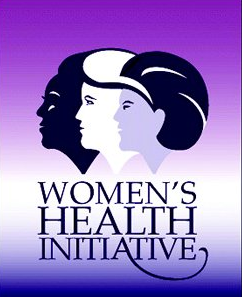
Operative birth is associated with persisting pain during or after sexual intercourse, known as dyspareunia, suggests a new study published in BJOG: An International Journal of Obstetrics and Gynaecology (BJOG).
The study aimed to investigate the contribution of obstetric risk factors, including mode of delivery and perineal trauma to postpartum dyspareunia. It also examined the influences of other risk factors, including breastfeeding, maternal fatigue, maternal depression and intimate partner abuse.
A cohort of 1244 first time mothers across six maternity hospitals in Melbourne, Australia was used. Data were taken from baseline and postnatal questionnaires at 3, 6, 12 and 18 months. The mean gestational age of the study participants at the time of enrolment was 15 weeks.
Of the women sampled, 49% had a spontaneous vaginal birth, two thirds of whom sustained a sutured tear and/or episiotomy, 10.8% had an operative vaginal birth assisted by vacuum extraction and 10.7% gave birth assisted by forceps. Additionally, 9.7% were delivered by elective caesarean section and 19.9% were delivered by emergency caesarean section.
Results showed that 78% of the study population had resumed sexual intercourse by 3 months, 94% by 6 months, 97% by 12 months and 98% by 18 months postpartum.
With regards to dyspareunia following childbirth, most of the women (85.7%) who had resumed sex by 12 months postpartum experienced pain during first vaginal sex after childbirth. Dyspareunia was reported by 44.7% of women at 3 months postpartum, 43.4% at 6 months, 28.1% at 12 months and 23.4% at 18 months postpartum. Of the women who reported dyspareunia at 6 months postpartum, a third (32.7%) reported persisting dyspareunia at 18 months postpartum.
Compared to women who had a spontaneous vaginal delivery with intact perineum or unsutured tear, women who had an emergency caesarean section, vacuum extraction or elective caesarean section had double the risk of reporting dyspareunia at 18 months postpartum, adjusting for maternal age and other risk factors.
Other factors associated with dyspareunia at 18 months postpartum include pre-pregnancy dyspareunia, intimate partner abuse and maternal fatigue. One in six women (16%) in the study experienced abuse by an intimate partner in the first 12 months postpartum. One third of these women (32.4%) reported dyspareunia at 18 months postpartum, compared with 20.7% of women who did not experience intimate partner abuse. The authors of the study highlight that these results suggest that clinicians should be alert to the possibility that intimate partner abuse is a potential underlying factor in persisting dyspareunia.
The authors conclude that greater recognition and understanding of the role of mode of delivery and perineal trauma in contributing to postpartum maternal morbidities is needed. Additionally, ways to prevent postpartum dyspareunia should be explored.
Ellie McDonald from the Murdoch Childrens Research Institute, Victoria, Australia and co-author of the study said:
“Almost all women experience some pain during first sexual intercourse following childbirth.
“However, our findings show the extent to which women report persisting dyspareunia at 6 and 18 months postpartum is influenced by events during labour and birth, in particular caesarean section and vacuum extraction delivery.
“Not enough is known about the longer term impact of obstetric procedures on maternal health. The fact that dyspareunia is more common among women experiencing operative procedures points to the need for focusing clinical attention on ways to help women experiencing ongoing morbidity, and increased efforts to prevent postpartum morbidity where possible.”
Patrick Chien, BJOG Deputy Editor-in-chief added:
“This is the first study with detailed, frequent and long-term follow-up to assess associations of dyspareunia with obstetric risk factors.
“This study provides us with robust evidence about the extent and persistence of postpartum dyspareunia and associations with mode of delivery and perineal trauma. Future research could look into ways of preventing dyspareunia.”
Adapted by MNT from original media release
http://www.medicalnewstoday.com/releases/288323.php
 The font type of written text and how easy it is to read can be influential when it comes to engaging people with important health information and recruiting them for potentially beneficial programmes, new research by The University of Manchester and Leeds Beckett University has found.Led by Dr Andrew Manley, a Chartered Sport and Exercise Psychologist and Senior Lecturer in Sport and Exercise Psychology at Leeds Beckett, the study – published in the latest issue of Patient Education and Counseling journal – assessed the extent to which the title and font of participant information sheets can influence a person’s perception of written information.Thirty-five pregnant women and 36 trainee midwives took part in the research and were randomly presented with one of four participant information sheets describing an antenatal programme.
The font type of written text and how easy it is to read can be influential when it comes to engaging people with important health information and recruiting them for potentially beneficial programmes, new research by The University of Manchester and Leeds Beckett University has found.Led by Dr Andrew Manley, a Chartered Sport and Exercise Psychologist and Senior Lecturer in Sport and Exercise Psychology at Leeds Beckett, the study – published in the latest issue of Patient Education and Counseling journal – assessed the extent to which the title and font of participant information sheets can influence a person’s perception of written information.Thirty-five pregnant women and 36 trainee midwives took part in the research and were randomly presented with one of four participant information sheets describing an antenatal programme.







